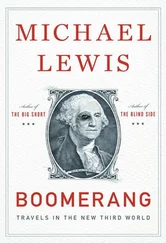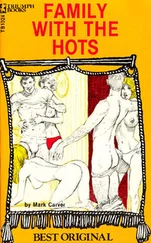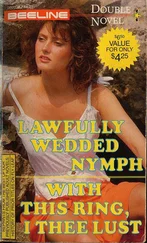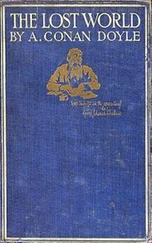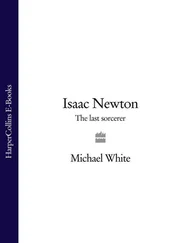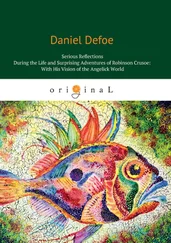I turned abruptly, and made a fast trot back the way I had come, back towards the main road, and the petrol station with the lone soldier. I could hear the drunk behind me yelling and shouting at me now in incomprehensible Guarani. The lights of the main road grew nearer. I put on speed. I was sweating now, from the heat of the night and from fear. I was running. I could hear the man behind me, still coming on after me. If I slipped and fell, I would be done for. I ran really fast, faster than I had run for years. I got a sharp stitch in my side. I gasped for breath. Still I could hear the drunk lumbering behind me, breathing hard. The petrol station came in sight, well-lit, the soldier standing at ease, leaning on his rifle. I turned. The man was behind me, in shadow: he had stopped. He had seen the soldier, too. To chase a man at night in the streets of Asunción, waving a machete, was an invitation to be shot dead by anyone in uniform. The drunk mouthed angrily at me, but in silence, waving his weapon over his head, but he didn’t come on any further. Now would be the time to shoot him, I thought, if I had a gun. But then, of course, the soldier would shoot me. The drunk took a swig of rum from the bottle which he still held in his other hand, swallowed, and then spat at me silently, in disgust. I turned back and ran on, more slowly. In a moment I was under the arc of light by the petrol station forecourt, a recent model BMW being filled up by the uniformed attendant, a European-looking man in an expensive suit sitting at the wheel. I paused, slowing to a walk, and caught my breath. I turned to see what my pursuer was up to. He had completely vanished, swallowed up in the shadows behind me, invisible. I walked slowly back to the Gran Hotel now, keeping in light the whole way, my chest heaving. The margin between safety and danger in Asunción was just a few yards.
In spite of the tight-meshed flyscreen covering the windows of my room, some insects always managed to get inside. Tonight was no exception. On my pillow was a magnificent golden and black bug, crawling slowly about, lost on the great white pasture of cotton. I put this intruder in a matchbox carefully, so as not to damage it, and ejected it into the night. I felt a humanist European completely out of place in the teeming South American interior.
Breakfast was a buffet served in the grand ballroom, its ceiling painted with frescos of tropical birds and foliage, 19th century in style and execution. Sicilian painters had been imported by Madame Lynch, I was told, to carry out this work. It would take a sophisticated, European sensibility like Eliza Lynch’s to think of reproducing what was just outside the ballroom – tropical foliage and birds – inside the ballroom, on the ceiling. It was an artifice of nature present a few feet away outside: only to an émigré European’s eyes would such a ceiling decoration seem exotic. Madame Lynch was the first person in the post-colonial era to see the immense possibilities of Paraguay. To Francisco Solano López, her lover and protector, she promoted the idea of the country as a place to improve, to embellish, to make chic and elegant. No one had conceived of Paraguay in this way before, it had simply been a colony to exploit. Under her influence all the imposing buildings, self-consciously imperial, were begun – the opera house based on La Scala, Milan, the copy of Les Invalides, the huge Presidential Palace, the tropical Gothic railway station. Most of them were never finished – she and López were people in a hurry, new people, on the rise, imitating that tornado of newness, Napoleon Bonaparte, patron saint of all pushy, power-hungry arrivistes who have decided to live by will power and naked force. Napoleon had proved you could do it all, come from nowhere – Corsica, to be precise – seize power with a whiff of grapeshot, eliminate your rivals, rule by sheer energy and dash, conjure an empire out of thin air, become a king maker and breaker, institute an aristocracy of merit and favour, these all new people who had more energy and more to lose than the old aristocracy of blood. And you could do it all in a few years, if you drove people hard enough. Stucco was made for this style of rule. It looked like marble, or stone, or whatever you wanted to have it look like. And it went up so quickly – you just laid mudbricks or rubble walls, and then coated it and smoothed it down and painted it – presto! It looked just like ancient Rome. Peter the Great, another imperial arriviste, had used stucco to create his own fantasy of European civic grandeur, St Petersburg: take a dash of Venice, a draught of Amsterdam, add some London, and some Rome – and there you have it. In a few years, with enough slave labour and a few second-rate European architects – for who outside Russia has ever heard of Rastrelli, Hamilton or any other of Peter’s experts – you had a brand new ‘European’ capital on the Gulf of Finland.
Against all the odds the adventurer Napoleon III had actually erected another ramshackle empire in France, a country that had completely lost its way after the revolution of 1789, which would try all and every system of government, one after the other, in case one might actually work for more than a few years. Solano López had been immensely impressed with the Second Empire in France, which he had seen for himself on his European Grand Tour: Madame Lynch was a product of its frenetic decadence, its squalid energy, its sense of nervous excess and self-conscious cultivation – the bombastic new opera houses, the Baron Haussmann-designed avenues in Paris, the braying brass bands and the opulent uniforms of army officers; and the Zouaves, that orientalist military fantasy in baggy pantaloons, floppy fezzes and curled-up slippers – a corps just made for Verdi opera, harking back to Napoleon I’s Mamelukes from Egypt. All this López admired deeply and tried to imitate in Paraguay, where he could. If there were not enough men to enslave to build his new palace, well then, he would use child slave labour. To see what López and Lynch had in mind for Asunción it is only necessary to go to the spa town of Vichy, in France, for here Napoleon III, with his foreign architects, many of them English, created an eclectic, imperial yet Ruritanian pleasure-capital, small but with the flamboyance and grandeur of a capital city, right in the middle of nowhere, well away from cities such as Paris with revolutionary mobs. If López and Lynch had simply stuck to Paraguay, forgoing the dreams of conquering Uruguay, Brazil and Argentina, they would have created a complete mid-19th-century tropical-Gothic version of Vichy, and very extraordinary it would have been, too. Imperial overreach on a massive scale meant nothing was ever completed. What does remain – the Parisian-style parks, the ruinous stucco palazzi, the defunct railway station – are impressive enough: no Grand Tour ever bore such strange fruit, so far from anywhere. There are doubters, of course. Alwyn Brodsky, the American biographer of Eliza Lynch, among others, claims that the Gran Hotel was never Madame Lynch’s country residence at all, that the whole story has been cooked up as a publicity stunt by the hotel’s owners. Hard facts on which everyone can agree were always in short supply in Paraguay; more or less everything was up for debate. There were versions of events, narratives, claims, counter claims, refutations. The outsider became embroiled in these arguments, willy-nilly. What one person told you the next would vehemently deny. Reality was slippery.
Madame Lynch was the mistress and éminence grise to Mariscal Francisco Solano López, the third of Paraguay’s dictators after his father Carlos Antonio López ( el fiscal – the magistrate), and the founding father Dr Francia ( el supremo – the supreme one). All of Paraguay’s dictators had earned soubriquets: Solano López had been el mariscal (the Marshal) and Stroessner was el rubio (the blond). If Oviedo ever came to power he would inevitably be el bonsai – people called him that already – unless it was el loco which he was called, too. Beyond simple description no one could agree about anything Madame Lynch had done. For the Colorados she was a national heroine, whereas the Radical Liberals saw in her a manipulative exploiter who bled Paraguay white, along with Solano López, whom they viewed as a criminal lunatic. Both of these ambiguous historical figures had been co-opted by Stroessner and his regime, and the cult of their heroism promoted assiduously. Madame Lynch’s remains had been brought back from Père Lachaise cemetery in Paris and buried in La Recoleta in Asunción. The man who had organized this transshipment, a Lebanese-Paraguayan, had profited from the occasion to import a large quantity of hashish in the coffin with the remains of Madama .
Читать дальше


